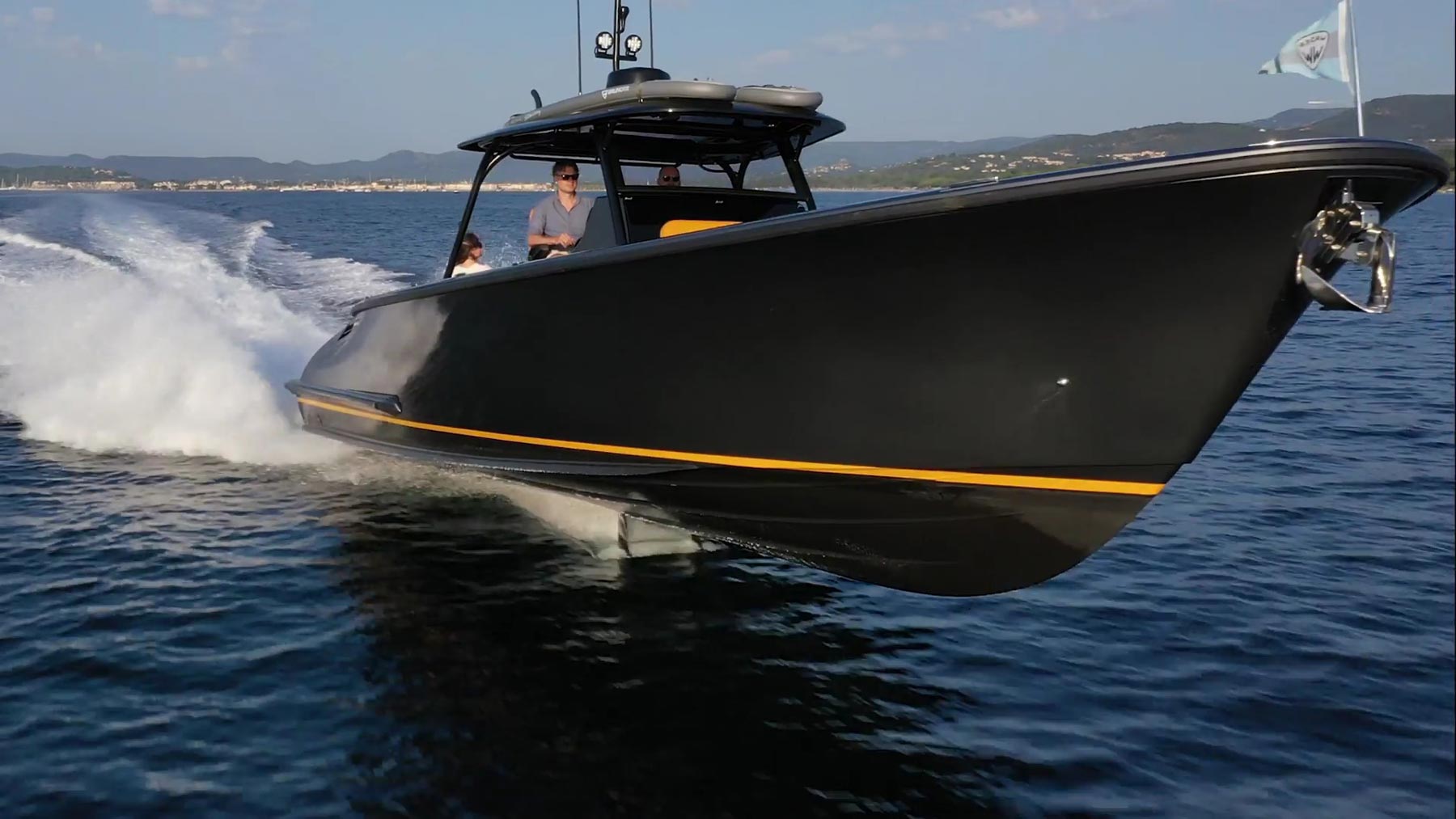For a number of years Van Oossanen Naval Architects have done research on the application of a hydrofoil placed amidships on planing hulls. The goal is not to go into a hydrofoiling “flying mode”, but to carry part of the boat’s weight on the foil, rather than on the bottom, hence it is called “Foil Assist”. With Foil Assist, it is possible to increase the speed and comfort on a planing yacht.
Tests were performed in a model basin in order to research the influence. Early on in the development process, a prototype yacht was built and tested with great success. In order to make Foil Assist on a planing hull feasible, Van Oossanen Naval Architects have developed a specific solution to stabilise a yacht using only one main foil. Patent is pending on this specific system. In the near future, Foil Assist will become one of the products brought to market by Hull Vane BV, alongside its other submerged wings to improve efficiency and comfort on ships.
The power of performance
In collaboration with Wajer Yachts, Foil Assist is applied on the Wajer 38 S, a fast planing hull. By using Computational Fluid Dynamics software and building upon in-depth hydrodynamic expertise, the design has been further optimised. Sailing this foiled Wajer makes for a more comfortable ride as she literally flies over the waves, even though the aft part of the hull is still planing. This means that the boat is slamming a lot less on the water and sails drier because the hull produces less spray. In addition, she sails more stable and faster because the boat has less resistance. Preliminary technical research also has shown that the Foil Assist reduces fuel consumption with 10-20%, reaching top speeds of 45-48 knots with a 3-6% reduction of power.
Working principles
The Foil Assist wing is built from solid stainless steel. It is a rather small, passive device, which is placed on a fixed position on the yacht. Foil Assist extends below the hull, but less so than the IPS units of Volvo Penta, which are the deepest part of the yacht. Foil assist is built to resist the forces when making fast corners and dampens the pitching motions in waves. Carrying the weight partially on a submerged wing rather than entirely on the waterline, reduces the effect of waves on the boat, as the orbital motion in waves diminishes with depth. Furthermore, with the hull not lifted completely out of the water, the yacht will behave like a normal planing yacht with predictable behaviour, and the weight requirements are not nearly as stringent as for a fully hydro foiling boat. Tests using 2 identical Wajers 38 S, one with and one without Foil Assist, in wind forces above 5 beaufort have give a supreme 1 to 1 comparisson. It was very clear the Wajer 38S was much more stable in pitch, role and heave, which made her safer and more comfortable.
The application of Foil Assist is a next step in increasing speed and efficiency and in reducing power requirements for high speed yachts, with the benefit of much more comfort in waves. This makes Foil Assist the future-proof enhancement to the Wajer 38 S and all other fast planing hulls. This new product will be marketed, sold and built by Hull Vane BV, who have ample experience on submerged foils, such as the custom Hull Vane®, the semi-custom Hull Vane® and the Dynamic Hull Vane®.
